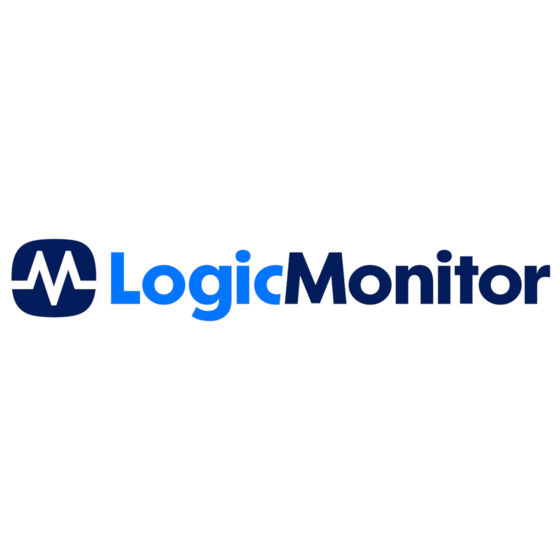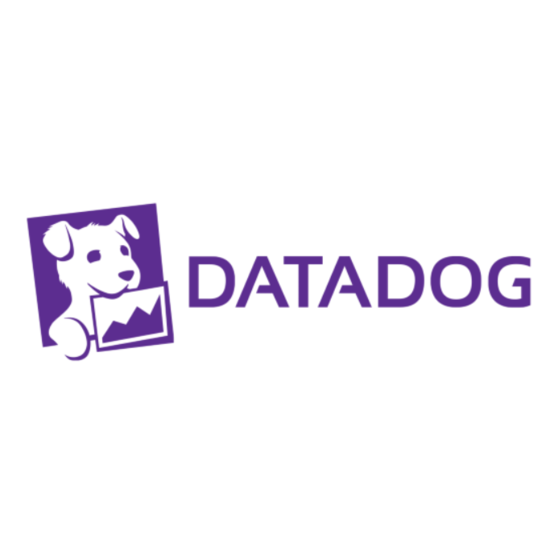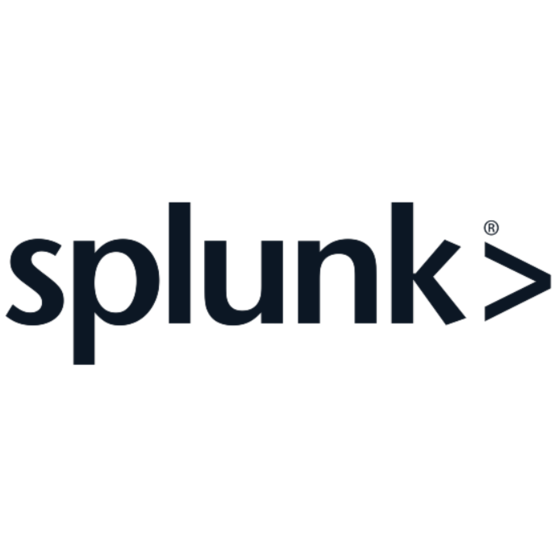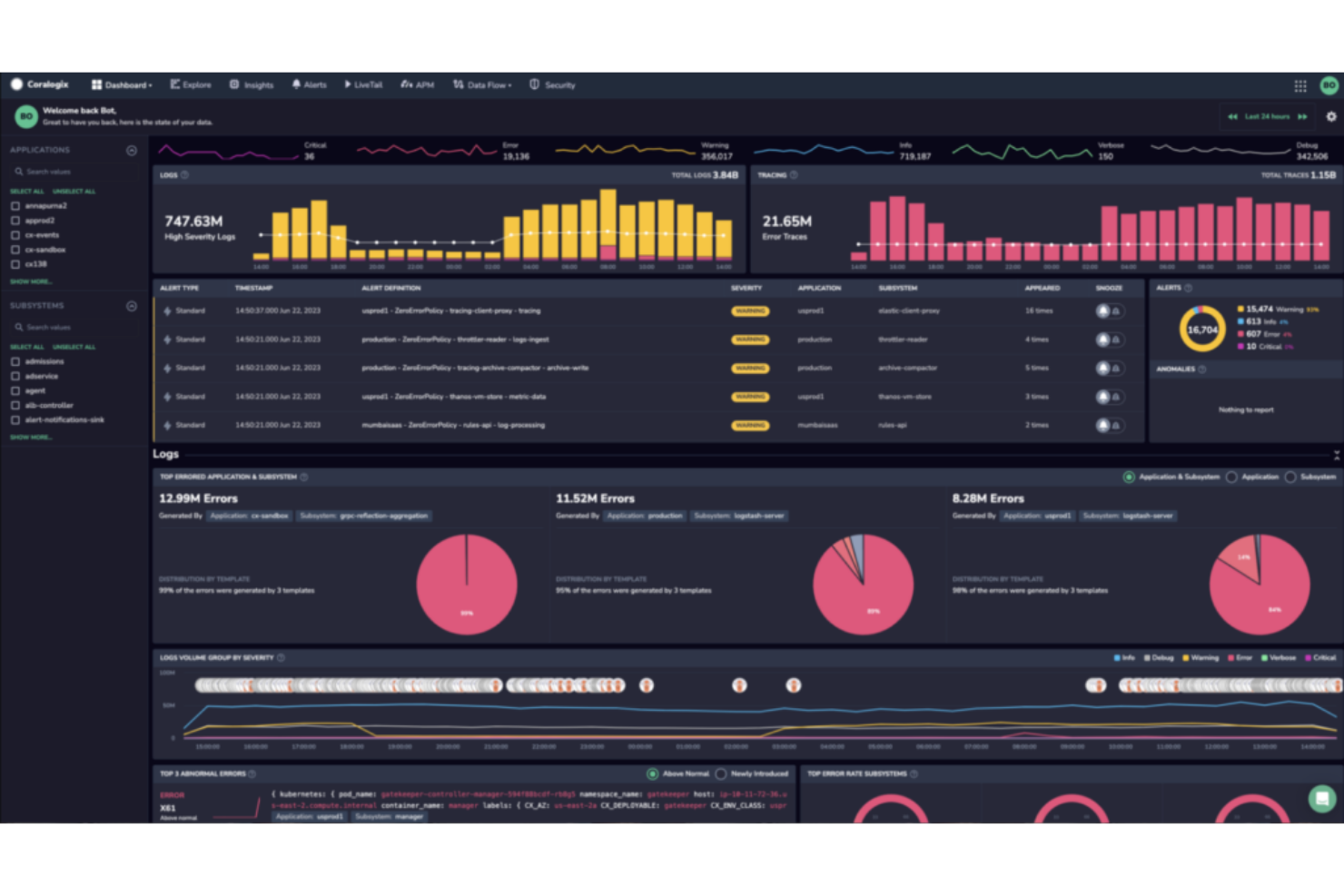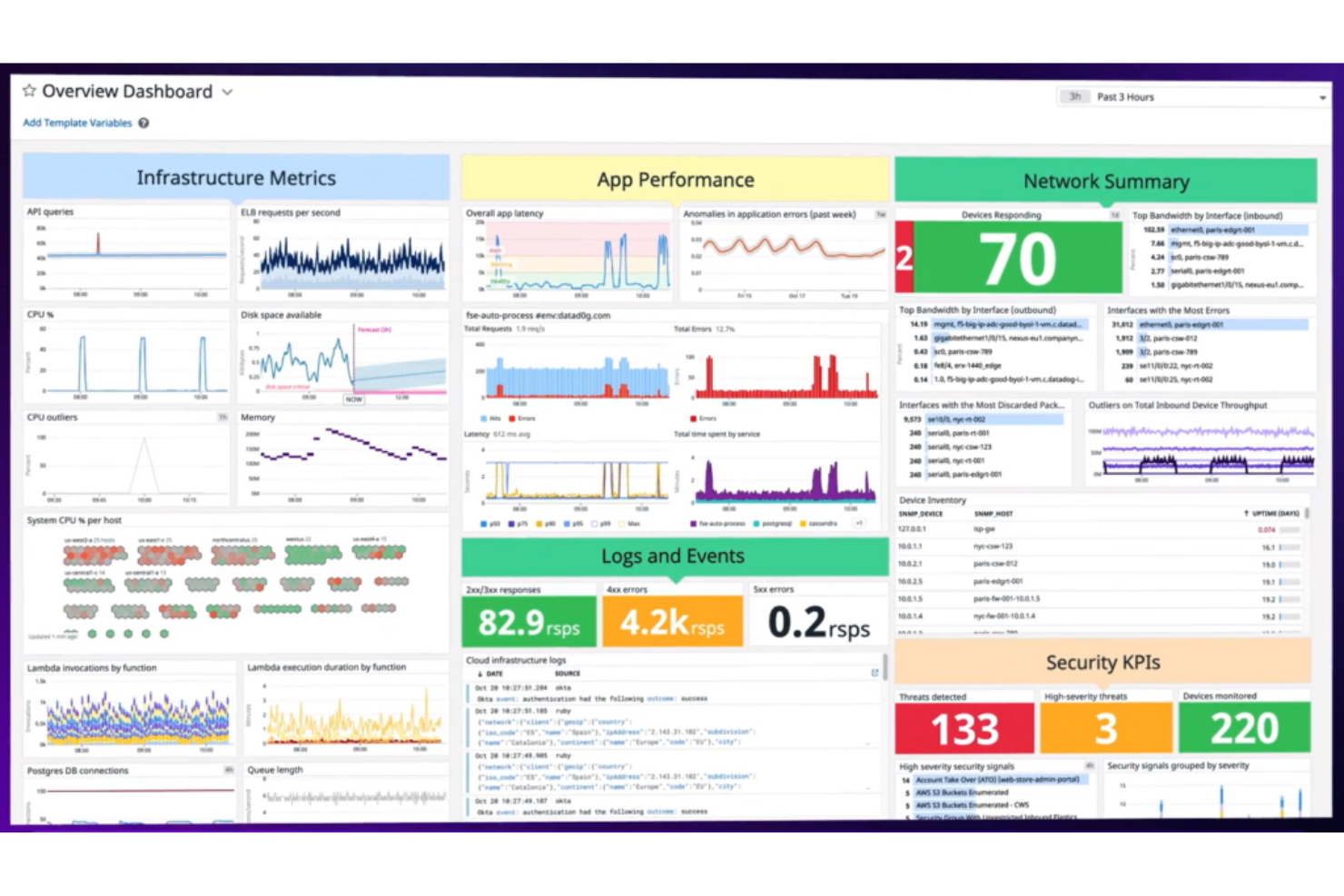10 Best Enterprise Monitoring Software Shortlist
Here's my pick of the 10 best software from the 23 tools reviewed.
Our one-on-one guidance will help you find the perfect fit.
Navigating the intricate landscape of enterprise monitoring can be daunting, and I've been there, wrestling with the overwhelming flow of data and alerts. Enterprise monitoring software is a tool designed to oversee and manage the vast ecosystem of your business operations. With it, you gain an unobstructed view into the heart of your system's performance, ensuring every component operates harmoniously.
If you're frequently blindsided by system downtimes, frustrated by undetected bottlenecks, or exhausted from manually piecing together data from disparate sources, this software is your beacon, guiding you through those challenges.
What Is An Enterprise Monitoring Software
Enterprise monitoring software provides a comprehensive overview of an organization's IT infrastructure, ensuring that systems function optimally and efficiently. Typically utilized by IT professionals, network administrators, and business leaders, these tools monitor, analyze, and manage components ranging from servers, applications, and networks to databases and cloud services.
By leveraging these solutions, users can promptly detect and address issues, ensure compliance, and make informed decisions based on performance data, ultimately aiding in maintaining operations and boosting overall business productivity.
Best Enterprise Monitoring Software Summary
| Tool | Best For | Trial Info | Price | ||
|---|---|---|---|---|---|
| 1 | Best for tailored enterprise solutions | 14-day free trial | From $15/user/month (billed annually) | Website | |
| 2 | Best for SaaS-based performance | Free trial available | From $3/resource/month | Website | |
| 3 | Best for business performance insights | Free trial available | From $6/month (billed annually) | Website | |
| 4 | Best for cloud infrastructure monitoring | 14-day free trial available | From $15/user/month | Website | |
| 5 | Best for data-driven decisions | 60-day free trial | Pricing upon request | Website | |
| 6 | Best for comprehensive reporting analytics | Not available | From $45/user/month (billed annually) + $150 base fee per month | Website | |
| 7 | Best for integrated IT ops | Not available | Pricing upon request | Website | |
| 8 | Best for application performance management | 14-day free trial | From $55/user/month (billed annually) | Website | |
| 9 | Best for visualization capabilities | Not available | Pricing upon request | Website | |
| 10 | Best for diverse tech monitoring | Free trial available | From $2,149/year | Website |
-

Docker
Visit WebsiteThis is an aggregated rating for this tool including ratings from Crozdesk users and ratings from other sites.4.6 -

Pulumi
Visit WebsiteThis is an aggregated rating for this tool including ratings from Crozdesk users and ratings from other sites.4.8 -

GitHub Actions
Visit Website
Best Enterprise Monitoring Software Reviews
Coralogix offers an enterprise monitoring platform, adept at crafting solutions to specifically fit the intricate needs of large-scale businesses. Its unique approach to tailoring solutions makes it an exemplary choice for customized IT infrastructure monitoring.
Why I Picked Coralogix:
In my exploration of enterprise monitoring software, Coralogix distinctly stood out. What caught my attention and led to my selecting it for this list was its innate ability to adapt and mold its services based on individual enterprise demands.
Its bespoke solutions and its ability to go beyond generic offerings is why I determined it's 'best for tailored enterprise solutions.'
Standout Features and Integrations:
One of the standout features of Coralogix is its profound automation capabilities which ease the workflow. With its cutting-edge server monitoring and dynamic thresholds, it offers a user-friendly experience even in complex enterprise environments. For integrations, Coralogix collaborates efficiently with platforms like Solarwinds, and Slack for notifications, and offers plugins to connect with various network devices, ensuring smooth monitoring.
Pros and cons
Pros:
- Extensive plugins for diversified network devices
- Tailored solutions for varied enterprise demands
- Powerful automation for streamlined processes
Cons:
- Learning curve for understanding all features
- Pricing could be a barrier for startups
- Might be overkill for very small businesses
LogicMonitor, a renowned enterprise monitoring software, provides comprehensive monitoring for IT infrastructures, primarily focusing on SaaS applications. Its capabilities are instrumental in ensuring the stellar performance of SaaS-based platforms, making it an industry favorite.
Why I Picked LogicMonitor:
When determining the right tools, LogicMonitor quickly caught my attention due to its specialization in SaaS-based monitoring. Its distinct approach to SaaS performance and comparisons with other tools confirmed my judgment of its superior capability in this niche. This is why I opine that it truly stands as the 'best for SaaS-based performance'.
Standout Features and Integrations:
LogicMonitor is fortified with intuitive APM tools and virtualization monitoring capabilities, ensuring that SaaS platforms run at their peak. Its advanced alerting system aids in quickly pinpointing and resolving potential issues, preventing unwanted downtime.
Regarding integrations, LogicMonitor connects with numerous DevOps tools and offers a range of add-ons, improving its utility across diverse IT environments.
Pros and cons
Pros:
- Advanced alerting system ensures prompt issue resolution
- Broad range of integrations supports diverse IT environments
- Specialized SaaS-based monitoring provides targeted insights
Cons:
- Some features might be overkill for smaller organizations
- Absence of transparent pricing can be a hurdle for potential adopters
- The interface might pose a learning curve for some users
AppDynamics offers a holistic perspective on IT infrastructure, focusing on the intersection between technology and business. Tailored for those prioritizing business performance insights, this tool meticulously bridges the gap between technical metrics and their real-world implications on business processes.
Why I Picked AppDynamics:
Among the myriad of enterprise monitoring software I've examined, AppDynamics resonated with its unique approach to merging business and technology perspectives. I chose this platform not just for its comprehensive infrastructure monitoring capabilities but primarily for its ability to contextualize technical data in terms of business impact.
This made it a clear winner when determining the best tool for gaining deep business performance insights.
Standout Features and Integrations:
AppDynamics shines with its application performance monitoring, real-time data collection, and root cause analysis functionalities. These features, coupled with its powerful API integrations, allow a more holistic view of business processes.
As for integrations, AppDynamics works with key platforms like AWS, Azure, and Microsoft, ensuring that users have extensive observability over their IT ecosystems.
Pros and cons
Pros:
- Effective root cause analysis tools
- Robust integration with major cloud providers
- Comprehensive application monitoring
Cons:
- Limited support for open-source tools
- Pricier base fee compared to some competitors
- Steeper learning curve for newcomers
Datadog serves as a comprehensive enterprise monitoring software, focusing on real-time tracking and analysis of cloud infrastructure. It's especially designed for businesses looking to gain deep insights into their cloud operations.
Why I Picked Datadog:
In determining the most fitting tool for cloud monitoring, Datadog's reputation and robust feature set were clear indicators of its superiority. I chose Datadog because of its dedicated focus on cloud environments and its impressive analytics capabilities. Its positioning as a dedicated cloud monitoring tool justifies the title of 'best for cloud infrastructure monitoring'.
Standout Features and Integrations:
Datadog shines with features such as agentless monitoring, advanced APM tools, and detailed capacity planning metrics. These tools help streamline CPU usage, ensuring uptime, and effectively managing infrastructure.
For integrations, Datadog offers connectivity with platforms like Linux, Windows, and iOS, while also supporting templates and SSH configurations for deeper infrastructure management.
Pros and cons
Pros:
- Efficient capacity planning tools for optimal resource allocation
- Wide array of integrations, supporting diverse IT environments
- In-depth cloud infrastructure analytics for informed decision-making
Cons:
- Might be over-equipped for smaller businesses with minimal cloud operations
- The pricing model may not suit businesses on tight budgets
- Can be overwhelming for first-time users due to its expansive feature set
Splunk Enterprise stands as a pivotal enterprise monitoring software, primarily centered on analyzing large volumes of machine-generated data. This tool is crafted for businesses intent on harnessing data insights to drive better decisions.
Why I Picked Splunk Enterprise:
Selecting Splunk Enterprise was based on its unparalleled capability to turn data into actionable insights, a vital asset in today's data-centric era. In comparing it with other tools, Splunk's data analytics prowess undeniably stood out. Its proficiency in enabling data-driven decisions underscored its designation as 'best for data-driven decisions'.
Standout Features and Integrations:
Splunk Enterprise is endowed with robust APM tools and an impressive suite of add-ons, ensuring deep data analytics and infrastructure monitoring. Its features are tailored to prevent downtime and ensure smooth operations. Integration-wise, Splunk interfaces with several DevOps tools and supports WMI configurations for improved monitoring.
Pros and cons
Pros:
- Supports a wide range of integrations, bolstering its versatility
- Varied add-ons for customized monitoring experiences
- Stellar data analytics features for robust insights
Cons:
- Some users might find the interface less intuitive compared to competitors
- Lack of transparent pricing could deter potential users
- The vast array of features may be intimidating for newcomers
Netreo serves as a pivot for organizations, focusing intently on delivering precise, in-depth analytics on their network's health and performance. Its edge in comprehensive reporting analytics truly transforms how enterprises perceive and act on their network data.
Why I Picked Netreo:
In my journey of comparing and judging various enterprise monitoring software, Netreo emerged as a clear front-runner, particularly in the domain of reporting. The depth and clarity of its analytics were unparalleled.
I determined that for those enterprises yearning for meticulous, detailed reporting, Netreo was the optimal choice. It's this specific expertise in analytics that makes it 'best for comprehensive reporting analytics.'
Standout Features and Integrations:
Netreo prides itself on its advanced network performance monitoring and real-time alerting capabilities. The tool's ability to provide granular insights into every facet of an enterprise's IT infrastructure is commendable.
Integration-wise, Netreo boasts strong ties with platforms like Microsoft, Cisco, and SNMP, which amplifies its monitoring potential by allowing a more interconnected view of various system components.
Pros and cons
Pros:
- Robust integrations with leading platforms
- Detailed real-time notifications
- Advanced infrastructure monitoring tools
Cons:
- Limited open-source tool support
- Priced slightly higher for small enterprises
- Initial setup can be complex for some users
BMC TrueSight Operations Management is a robust enterprise monitoring software solution that focuses on unifying various IT operations within an organization. With its dedication to integrated IT ops, it strives to bring cohesion and streamline processes related to operating systems, data centers, and bandwidth.
Why I Picked BMC TrueSight Operations Management:
In the process of determining the best tool for integrated IT operations, BMC TrueSight Operations Management presented itself as a standout choice. I chose it because of its exceptional ability to bring together various facets of IT into a unified monitoring platform.
Given its comprehensive feature set and emphasis on integration, it's evident why I judged it as 'best for integrated IT ops'.
Standout Features and Integrations:
Key features of BMC TrueSight Operations Management include in-depth network monitoring tools that can identify outages or performance issues, remote monitoring capabilities that offer insights on both on-premises and cloud-based systems and advanced graphs for traffic analysis.
In terms of integrations, this solution connects with platforms like Nagios XI and Netflow, providing a holistic network management system.
Pros and cons
Pros:
- Strong integrations for a well-rounded network management
- Detailed traffic analysis with advanced graphing capabilities
- Comprehensive integrated IT operations monitoring
Cons:
- Some features may be too advanced for smaller enterprises
- The pricing structure is not transparent and may require direct inquiry
- May have a steeper learning curve due to integrated features
IBM Instana is a premier tool that zeroes in on application performance management, providing a detailed analysis of applications in real-time. Its strengths in identifying and rectifying performance bottlenecks align perfectly with its tag of being 'best' for application management.
Why I Picked IBM Instana:
When it came to selecting a tool for application performance management, IBM Instana was the standout choice. After comparing various platforms and determining the nuances of their offerings, I judged that Instana's capabilities surpassed others in effectively monitoring application performance.
In my opinion, based on its advanced features and user feedback, it's undoubtedly the 'best for application performance management.'
Standout Features and Integrations:
IBM Instana's advanced APM techniques focus intensely on monitoring endpoints, ensuring that each part of an application runs smoothly. The tool dynamically visualizes application performance, presenting a clear picture to users and enabling faster issue resolution. Instana offers integrations with a broad array of systems and platforms, ensuring that businesses can monitor applications regardless of the underlying technology.
Pros and cons
Pros:
- Broad integration capabilities cater to diverse tech stacks
- Comprehensive monitoring of endpoints gives a detailed application overview
- Exceptional focus on application performance, ensuring optimal user experiences
Cons:
- Some users might find the default alert settings to be overly sensitive
- The extensive range of features may pose a steep learning curve for new users
- Lack of transparent pricing can make budget planning challenging
Grafana Enterprise stands as a leading infrastructure monitoring solution, specifically designed for producing intricate and detailed visual representations of data. Its prowess in visualization capabilities provides end users with clear insights into complex datasets.
Why I Picked Grafana Enterprise:
When selecting an enterprise monitoring software with an emphasis on visual clarity, Grafana Enterprise was a clear front-runner. I chose it for its unmatched ability to transform vast amounts of network traffic data into understandable visual formats. Its emphasis on high-quality visualization makes it undeniably the 'best for improved visualization capabilities'.
Standout Features and Integrations:
Some of Grafana Enterprise's most notable features include its advanced templating capabilities, which allow for customization of visual data displays, agentless monitoring, and tools geared toward uptime tracking and CPU usage analysis.
Integration-wise, Grafana Enterprise connects smoothly with platforms such as Linux, Windows, and iOS, streamlining the infrastructure management process across various operating systems.
Pros and cons
Pros:
- Robust cross-platform integrations, improving infrastructure monitoring
- Flexible templating options for tailored data representation
- Superior visualization capabilities for diverse datasets
Cons:
- Potential overkill for businesses with simpler visualization needs
- Pricing information isn't readily available, which may deter some users
- May require some time to grasp all its features fully
PRTG Enterprise Monitor is a comprehensive monitoring solution designed to oversee large-scale IT infrastructures. It enables you to monitor your entire IT environment, including business services and service level agreements (SLAs), ensuring optimal performance and availability.
Why I Picked PRTG:
PRTG supports a diverse range of technologies and protocols, enabling you to monitor various systems and devices within your infrastructure. I especially like its automatic network discovery feature, which streamlines the initial setup by detecting and configuring devices within your network. Furthermore, PRTG offers real-time alerts through various channels, such as email and push notifications, ensuring that you're promptly informed of any issues that may arise.
Standout Features and Integrations:
Another key feature of PRTG Enterprise Monitor is its centralized overview, allowing you to manage multiple PRTG installations through a single interface. This unified view simplifies the monitoring process across extensive and distributed networks, making it easier to identify and address issues promptly. PRTG also offers distributed monitoring across unlimited remote locations, customizable reports that integrate only the information you need, and multiple user interfaces for web, desktop, and mobile access.
Integrations include AWS, Cisco, Dell Technologies, HPE, VMware, ServiceNow, Check Point, Sonicwall, NetApp, Fujitsu, Lansweeper, and Martello.
Pros and cons
Pros:
- Provides a comprehensive overview of network infrastructure
- Customizable dashboards and real-time alerts
- Supports multiple monitoring technologies
Cons:
- Initial setup can be time-consuming
- Licensing based on sensors can become expensive for larger networks
Other Enterprise Monitoring Software
Below is a list of additional enterprise monitoring software that I shortlisted, but did not make it to the top 10. These are definitely worth checking out.
- Checkmk
For scalability and adaptability
- Site24x7
For holistic enterprise monitoring
- ManageEngine OpManager
For diversified network monitoring
- Icinga
For open-source solution
- Dynatrace
Good for AI-driven full-stack monitoring
- Zabbix
Good for open-source infrastructure visibility
- Pandora FMS
Good for flexibility across platforms
- Micro Focus Operations Bridge
Good for automating IT operations
- Prometheus
Good for time-series data metrics
- Mezmo Log Analysis Software
Good for intuitive log analysis
- VMware Aria
Good for cloud-native operations
- Sensu
Good for multi-cloud monitoring
- ScienceLogic
Good for discovery and dependency mapping
Selection Criteria For Enterprise Monitoring Software
Choosing the right enterprise monitoring software is a critical decision that requires a thoughtful approach. I've evaluated dozens of data observability solutions, log monitoring software, and other tools in this space, and I've even tested a fair number personally. What became clear through my research and trials is that certain criteria stand out as especially important for making an informed choice.
Here's what I zeroed in on:
Core Functionality
- Real-Time Monitoring: Continuous oversight of network, servers, and applications.
- Alert Management: Configurable alerts for various metrics to notify of potential issues.
- Data Visualization: Dashboards that can display key performance indicators (KPIs) in a readable manner.
- Reporting: Customizable reports for in-depth analysis and performance tracking.
Key Features
- Scalability: Can the tool grow with your organization, both in terms of monitored endpoints and user roles?
- Multi-Platform Support: Does the tool offer support for various operating systems and virtualized environments?
- Integration Capabilities: How well does the tool integrate with other systems like CRM, helpdesk, and other IT management software?
- Compliance: Does the tool have features that help in meeting industry-specific compliance standards like GDPR, HIPAA, or SOC 2?
Usability
- Intuitive Interface: For a tool that’s going to be a daily part of operations, a clean, intuitive UI that minimizes the learning curve is crucial.
- Role-Based Access: Different roles within the organization should be able to configure and access features based on permissions.
- Onboarding Resources: Due to the complexity of enterprise solutions, the availability of a comprehensive learning library or training program is beneficial for new users.
- Customer Support: Look for products that offer multiple channels for customer support, including live chat, email, and a knowledge base.
Most Common Questions Regarding Enterprise Monitoring Software (FAQs)
What are the benefits of using the best enterprise monitoring software?
Utilizing top-tier enterprise monitoring software offers numerous advantages:
- Proactive Issue Detection: Before they escalate, these tools identify and flag potential issues, allowing for timely resolutions.
- Enhanced Performance Insights: Detailed analytics provide insights into system performance, facilitating data-driven decisions.
- Centralized Control: Users can monitor and manage various IT components from a singular dashboard, streamlining operations.
- Improved Resource Allocation: By understanding system usage patterns, organizations can allocate resources more efficiently.
- Security and Compliance: These tools help in monitoring for security breaches and ensuring that systems adhere to set regulations and standards.
How much do these tools typically cost?
The pricing for enterprise monitoring software varies widely, depending on the features offered, the scale of operations, and the vendor. Some tools come with a one-time purchase fee, while others follow a subscription model, usually charged monthly or annually.
Can you explain the different pricing models for enterprise monitoring software?
Certainly! The most common pricing models include:
- Subscription-Based: Charged on a monthly or yearly basis, often including updates and support.
- Perpetual License: A one-time purchase granting indefinite use of the software.
- Usage-Based: Pricing is based on the amount of resources or metrics monitored.
- Freemium: Offers basic functionalities for free, with advanced features available for a fee.
What is the typical range of pricing for these tools?
The price can range from as low as $10 per month for basic plans or smaller operations to upwards of $10,000 annually for larger enterprises with extensive monitoring needs. However, this range can vary based on the specific tool and its offered features.
Which are some of the cheapest and most expensive monitoring software?
While specific prices can change based on promotions and updated offerings, traditionally, tools like Zabbix and Prometheus are on the more affordable end, or even free. On the higher end, solutions like Dynatrace, AppDynamics, and Splunk Enterprise often come with a heftier price tag, given their comprehensive feature sets.
Are there any free options available for enterprise monitoring?
Yes, there are free options available, often referred to as “freemium” models. Tools like Prometheus and Zabbix offer versions with no costs, providing basic monitoring capabilities. However, for advanced functionalities, a premium might be charged.
Other Enterprise Monitoring Software Reviews
Summary
Selecting the right enterprise monitoring software is a multi-faceted task that demands careful consideration of core functionalities, key features, and usability.
Prioritize real-time monitoring, robust alert management, and customizable reporting to ensure that you're investing in a tool that adequately supports your operations. Pay special attention to scalability and integration capabilities to future-proof your investment.
Lastly, don't underestimate the value of an intuitive interface and strong customer support; these elements can make or break the user experience.
Key Takeaways
- Core functionality is king: Essential features like real-time monitoring and alert management are non-negotiables. Make sure the tool you choose excels in these areas.
- Look for scalability and integration: As your organization grows, your chosen software should be able to grow with you. Ensure that it can easily integrate with other essential tools in your tech stack.
- Usability matters: An intuitive interface and comprehensive onboarding resources can significantly impact the tool's efficiency and adoption rate within your organization. Choose a tool that makes life easier for its users.
What Do You Think?
Before wrapping up, I want to acknowledge the vast landscape of enterprise monitoring software out there. While I've done my best to research and highlight the top contenders, there might be hidden gems I've overlooked. If you've come across a tool that has impressed you or think there's something vital missing from this list, please reach out and let me know.
Your insights are invaluable, and I'm always eager to learn about innovative solutions making waves in the industry. Together, we can keep this guide as comprehensive and useful as possible.



